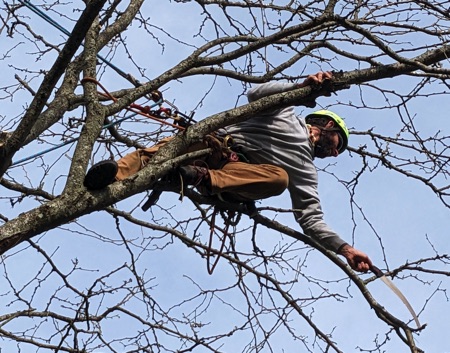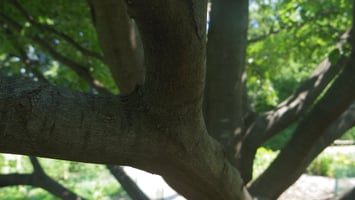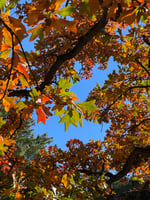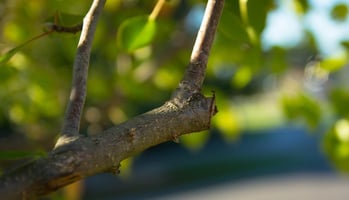Tree care is an ongoing process that begins the first year of planting and is continued throughout...
This Honey Locust is in Need of Help
The Honey Locust tree was a beautiful sight to behold. It stood tall and proud in the immaculate yard, its leaves just budding out. The tree was accompanied by a swingset and treehouse spread out around the backyard that hinted at visits of grandchildren.
The family noticed that the tree was starting to look a little worse for wear. Some of the branches were dead, and the branches were starting to fall during strong winds. The family knew that they needed to do something to help the tree, so they called St. Louis Tree Pros to come perform their magic. St. Louis Tree Pros had performed a number of services for them previously and because they were always happy with the results, they did not hesitate to call Gabe to come help this struggling tree.
The tree was in good health overall, but it did need some pruning. He explained that deadwood should be removed regularly so the tree can seal the wounds from dead branch removal and keep the area below safe.
With the knowledge of the homeowner, Gabe brought along two helpers. The first was a younger helper, and the other was me, to help keep an eye on the trainee and to provide ground support while Gabe was in the tree.
Gabe trimmed the deadwood out of the tree, and he also gave the tree a general checkup. He told the family that the tree was healthy and that it should be fine for many years to come.
Although the youngster was more interested in his collection of toy trucks, he did find time to help gather and put away Dad’s equipment.
The family was very grateful to Gabe for his help. They were glad that they had called him. They were thrilled with the final result and they were confident that the tree would now be able to thrive for many years to come.
Why is deadwooding important?
There are several reasons why deadwooding is important:
- To improve the health of the tree. Pruning deadwood allows a tree to seal open wounds from the branch quicker.
- To improve the appearance of the tree. Deadwood can make a tree look unsightly, and it can also be a safety hazard. Removing deadwood can improve the appearance of the tree and make it safer for people and property beneath.
- To monitor tree health. Deadwood production rates can help determine tree health. By pruning deadwood you can have a baseline to compare the rate in which deadwood appears.
When should deadwood be removed?
Deadwood should be removed on a regular basis. Some tree species are best to be pruned during specific seasons. It is best to consult an ISA-certified arborist to set up a regular maintenance schedule that aligns your landscape preferences with your tree needs.
How to deadwood a tree
If you are not comfortable deadwooding a tree yourself, you should hire an ISA-certified arborist to do it for you. However, if you do decide to deadwood the tree yourself, there are a few things you should keep in mind:
- Use sharp pruning shears or a saw. Dull tools can damage the tree.
- Make clean cuts. Cuts should be made just outside the branch collar, which is the swollen area where the branch meets the trunk.
- If you are in doubt whether a branch is dead or alive just leave it. You can always prune it later.
Conclusion
Deadwooding is an important part of tree care. By removing dead, diseased, or damaged branches from your trees, you can help to keep them healthy, strong, and safe.



